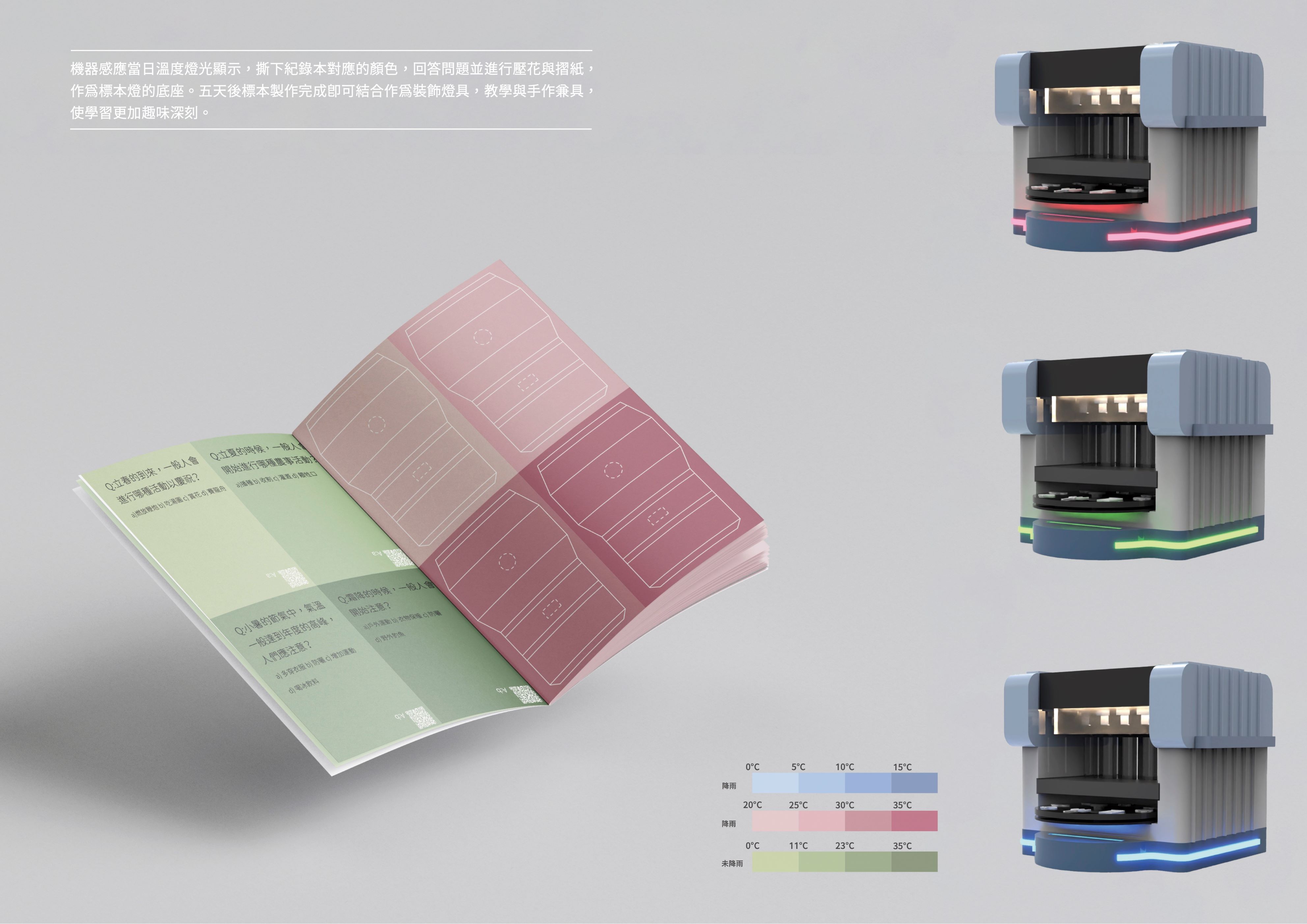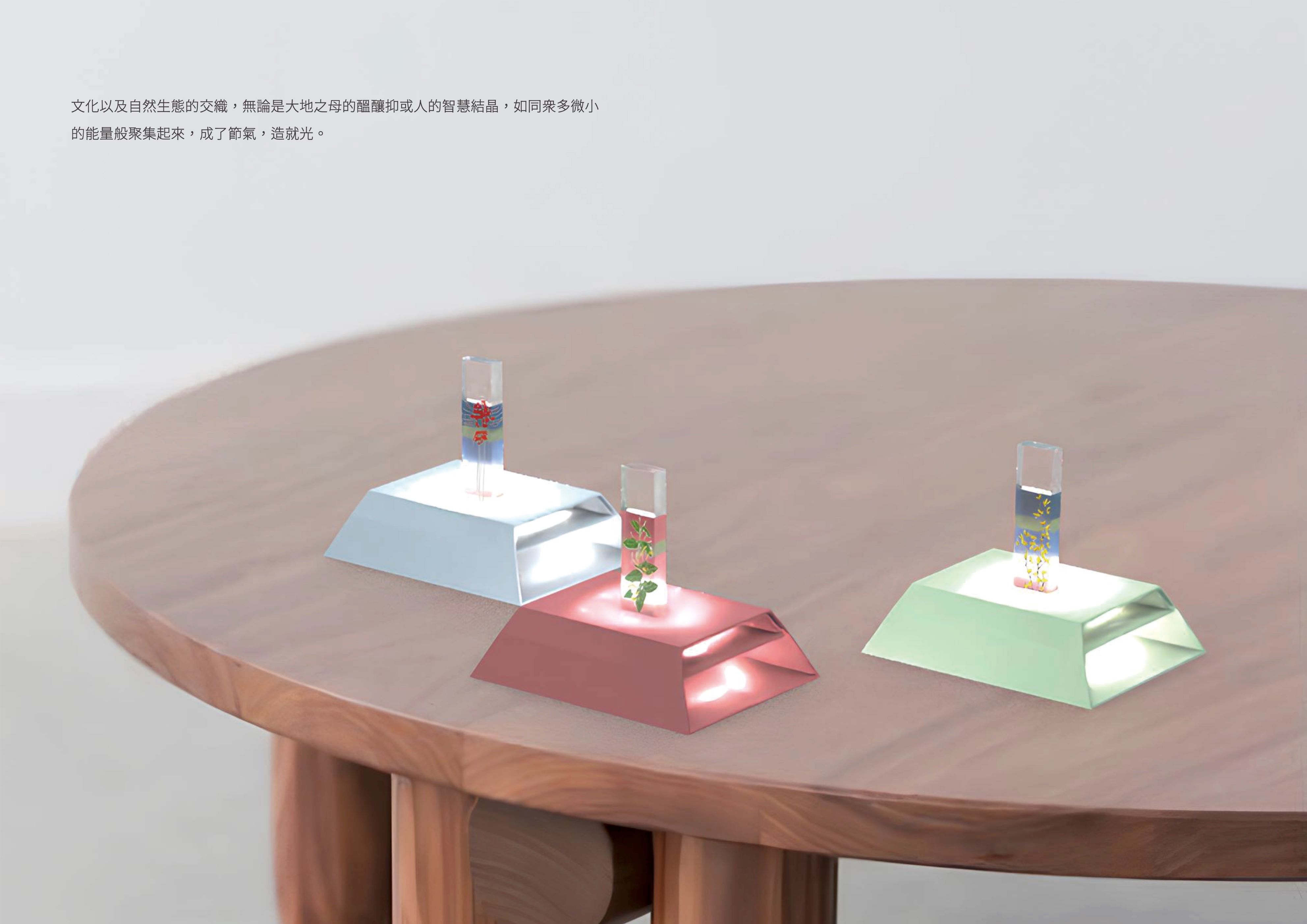24節氣標本孩童互動教具
KEY-W





透過結合24節氣內容和小五小六生自然課程中的天氣概念,我們能夠讓孩童在與教具互動的過程中,不僅以科學的角度認識氣候,還能從文化的面向理解節氣和節慶的構成,以及古人的智慧。我們以降雨、溫度和節慶三個元素為核心,透過色彩和標本等視覺化產物引導孩童認識各種節氣的狀態和特色。
除了製作標本之外,我們還將剪紙文化融入其中,讓孩童透過剪出該節氣的特有物來更容易理解各節慶的由來和習俗。在製作標本和剪紙的過程中,孩童不僅能夠感受到自然的變化,還能夠了解到古人是如何觀察並適應這些變化的。
此外,我們還將標本和剪紙結合起來,製作成桌上型擺飾燈具,這代表著古人的智慧和大自然的淬鍊。這些燈具將人與自然的能量轉化為光源,照耀著我們的生活。通過這樣的互動教學方式,孩童不僅能夠學到知識,還能夠感受到中國傳統文化的魅力,培養對自然的尊重和感恩之情。
KEY-W
By combining the content of the 24 solar terms with the concepts of weather in the natural science curriculum for elementary school students, we enable children to interact with educational tools. This interaction not only allows them to understand climate from a scientific perspective but also fosters an appreciation for the cultural significance of the solar terms and festivals, as well as the wisdom of ancient people.
We focus on three core elements: rainfall, temperature, and festivals, guiding children to recognize the characteristics and states of various solar terms through visual aids such as colors and specimens. Apart from specimen-making, we incorporate the art of paper cutting, enabling children to easily grasp the origins and customs of each festival by cutting out unique symbols associated with the respective solar terms.
Furthermore, we integrate specimens and paper cutting to create tabletop decorative lamps. These lamps symbolize the wisdom of ancient people and the tempering of nature. They transform the energy between humans and nature into light, illuminating our lives. Through such interactive teaching methods, children not only acquire knowledge but also experience the charm of Chinese traditional culture, fostering respect and gratitude towards nature.
國立高雄師範大學 工業設計系
(四年級)
楊函容
國立高雄師範大學 工業設計系
(四年級) 指導老師 陳俊智
黃英修